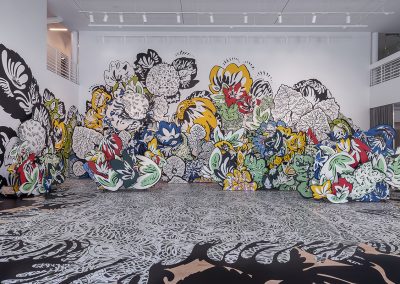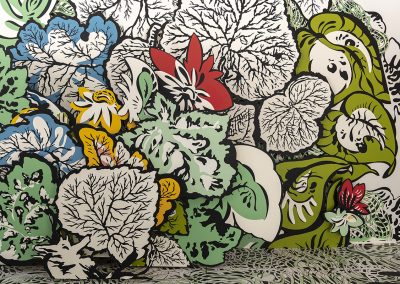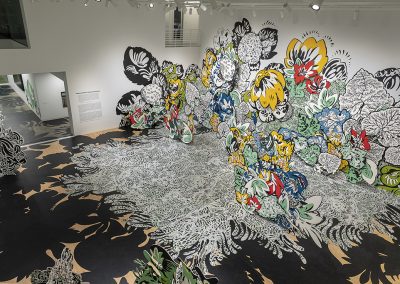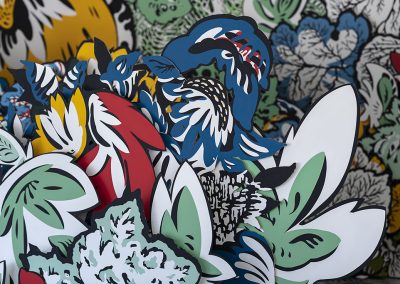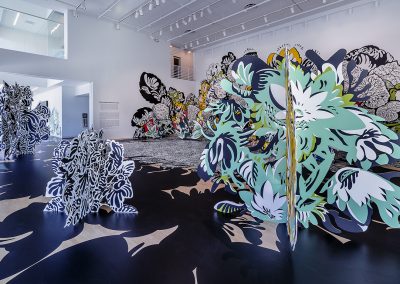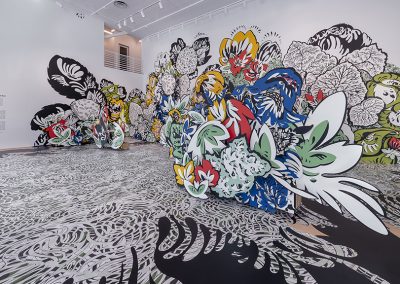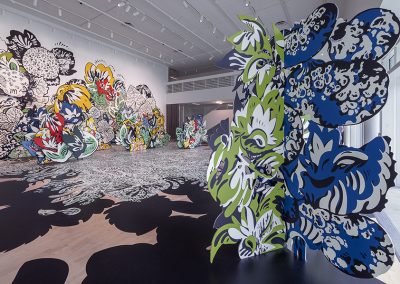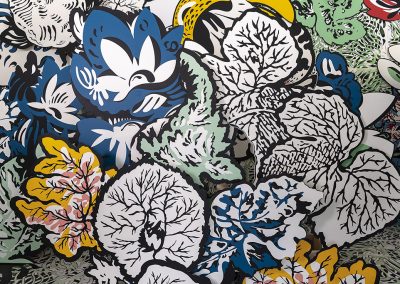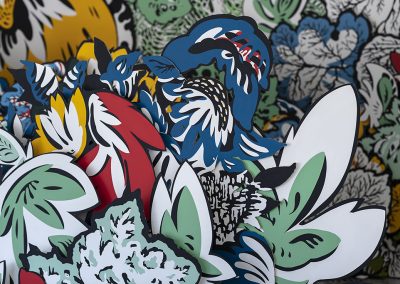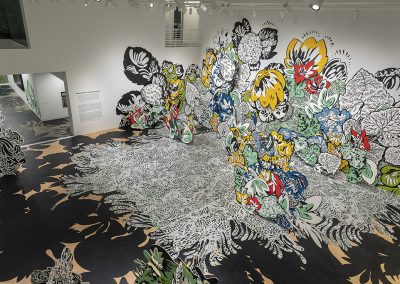Natasha Bowdoin
Sideways to the Sun
Moody Center for the Arts at Rice University; Houston, Texas
January 25 – May 18, 2019
In the black water with the sun shining at midnight, those fruit shall come ripe and in the darkness of that which is golden shall split open to reveal the revelation of the fatal softness in the earth… And there shall be in the planting in the shadows a grace and a mercy from which shall blossom dark flowers, and their teeth shall devour and sustain and herald the passing of an age.
– Jeff VanderMeer, Annihilation
Nature is a language, can’t you read?
– Ask, The Smiths, 1986
Houston-based artist Natasha Bowdoin examines our manifold relationship to the natural world through the intersections of the visual, experiential, and the literary. Bowdoin’s new installation, Sideways to the Sun, is a celebration of mutable form. Creating a space where nature reigns, Bowdoin encourages the viewer to move past cultural appropriations of nature, such as the flower as a stand in for feminine beauty, to arrive at a natural world less obedient, more willful and existing all on its own.
Bringing this outside in, Bowdoin populates the central gallery with larger-than-life springtime abundance, carnivorous plants, creeping vines, and poisonous color inspired by far-reaching sources such as early cartoons, transcendentalist texts, 1800s scientific illustrations, 1970s patio prints, George Méliès’ A Trip to the Moon, and other factual and fictional exploration stories that take us to far-flung locales, real and imagined. Bowdoin looks to these other artists’ and authors’ embodiments of how we see and reflect ourselves in the world around us as a jumping off point for her own re-orientation to nature.
Her forms contain within themselves the potential for unruly transformation. The density of her flora, both painted on the wall, spilled on the floor and floated into space are meant to confuse and overwhelm. Blooms also propagate on movable screens, paying homage to early theatrical scenery wagons such as the ones built for Méliès’ various adventure films. In this world no form is necessarily fixed, no entity entirely contained or safe from corruption; boundaries of bodies rendered irrelevant. Bowdoin beckons us into this thicket, to wander deep into the more marginal precincts of the natural world, where unknown possibilities lie in the overgrowth and where man can make no claim.
About the artist
Natasha Bowdoin (b. 1981, West Kennebunk, ME) lives and works in Houston. A graduate of the Tyler School of Art (MFA in painting, 2007) and Brandeis University (BA in classics and studio art, 2003), Bowdoin has been awarded numerous artist residencies, including the Core Program, Museum of Fine Arts Houston (2008-2010). Bowdoin has exhibited widely with many gallery and museum exhibitions over the past decade, including recent solo exhibitions: Maneater at the Massachusetts Museum of Contemporary Art in North Adams, MA (2018-2019), and Lunar Spring at the Visual Arts Center of Richmond, VA (2017). Known for her cut paper, collage-based work, Bowdoin investigates the potential intersections of the visual and the literary, channeling the experience of reading into the activity of drawing, while reimagining our relationship to the natural world. Before art school Bowdoin worked as a lobsterwoman for her family in Maine.
About the Moody Center for the Arts
Inaugurated in February 2017, the Moody Center for the Arts at Rice University is a state-of-the-art, non- collecting institution dedicated to transdisciplinary collaboration among the arts, sciences, and humanities. The 50,000-square foot facility, designed by acclaimed Los Angeles-based architect Michael Maltzan, serves as an experimental platform for creating and presenting works in all disciplines, a flexible teaching space to encourage new modes of making and a forum for creative partnerships with visiting national and international artists. The Moody is free and open to the public year-round. Its hours of operation are Tuesday through Saturday, 10:00 am – 5:00 pm.

